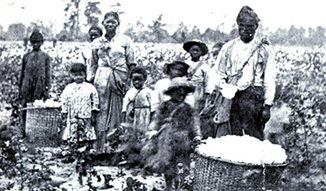The Plight of the Black Ex-Slave: “they turned us out like stray dogs”
The Plight of the Black Ex-Slave:
“they turned us out like stray dogs”
Emancipated Blacks had hoped to chart their own destiny but the odds were stacked mightily against them. Most freed slaves were skilled in agriculture and the building trades, but few had ever en-gaged in any form of commerce; indeed, many had never even seen money or known of its role in their lives. In 1870, nine of ten Black adults could not read; the tenth had no power to dispute what he could read. Although there were attempts to educate the ex-slave after centuries of legally enforced ignorance, such efforts were meager and often cynical and proved no match for the challenges he faced. The plight of ex-slaves “Toby” and “Govie” illustrates the immense difficulties facing the new Americans:
“I don’t know as I ’spected nothing from freedom, but they turned us out like a bunch of stray dogs, no homes, no clothing, no nothing, not ’nough food to last us one meal. After we settles on that place, I never seed man or woman, ’cept Govie, for six years, ’cause it was a long ways to anywhere. All we had to farm with was sharp sticks. We’d stick holes and plant corn, and when it come up we’d punch up the dirt round it. We didn’t plant cotton, ’cause we couldn’t eat that. I made bows and arrows to kill wild game with, and we never went to a store for nothing. We made our clothes out of animal skins.”


